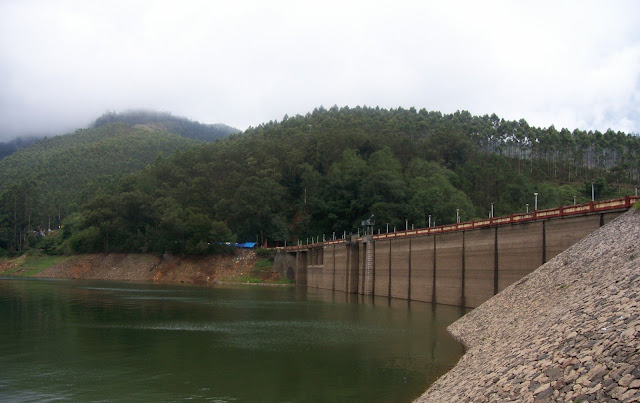A visit to Kerala is incomplete without visiting the famous hill station of Kerala called Munnar. It is part of the Western Ghats falls in the Idukki district. The name Munnar actually means three
rivers. This is a place where 3 rivers (Mudhirapuzha,
Nallathanni and Kundaly river) come and join together.
During one of our annual vacations to Kerala, we made this
journey to Munnar by renting a car.
It takes about 3.5 hours from Kochi via Adimali. It is an uphill drive through a natural
forest with a view of the most picturesque valleys and waterfalls.
 |
| A glimpse of Munnar Town |
Munnar is a very small town with houses scattered across the mountains. You can have a good look at the entire town from one of these mountains. We stayed at the Mar Thoma Retreat Centre on the Mattupetty
Road. It was a very comfortable cozy place and once we had freshened up, we were
on our way to see the Mattupetty Dam, or as some call it, the Madupetty Dam. The dam is nearly 13 Kms from Munnar town. Further ahead is a beautiful tourist spot called the Echo Point. The
river enveloped by mountains all around was a beautiful sight to behold.
 |
| The catchment basin for the Mattupetty Dam. Look at the shaven banks that show the level to which the basin fills up when the dam is full. |
 |
| Mattupetty Dam |
Munnar on Google Maps
If you are making the trip from Kerala, the nearest airport is Nedumbassery at Kochi. The nearest railway station would be Ernakulam or Aluva. And then take a taxi or cab. It is about 110 Kms from airport.
Interesting tidbits on Munnar
If you are making the trip from Kerala, the nearest airport is Nedumbassery at Kochi. The nearest railway station would be Ernakulam or Aluva. And then take a taxi or cab. It is about 110 Kms from airport.
Interesting tidbits on Munnar
- The blooming of Neelakurinji. This tiny blue flower (Strobilanthes kunthianum) blooms every 12 years and spreads the entire mountainscape of Munnar and is a phenomenon worth clapping ones eyes on. The flower with 40 odd varieties bloom mostly in shades of blue, and thus the name. Neela in the local language stands for the colour blue and Kurinji the local name for the flower. The blooming of Neelakurinji usually starts from August and would last up to October. After 2006, we can expect another blooming in 2018. Book your tickets!



No comments:
Post a Comment